Jiankang Zhang
Fast Searching of Extreme Operating Conditions for Relay Protection Setting Calculation Based on Graph Neural Network and Reinforcement Learning
Jan 16, 2025



Abstract:Searching for the Extreme Operating Conditions (EOCs) is one of the core problems of power system relay protection setting calculation. The current methods based on brute-force search, heuristic algorithms, and mathematical programming can hardly meet the requirements of today's power systems in terms of computation speed due to the drastic changes in operating conditions induced by renewables and power electronics. This paper proposes an EOC fast search method, named Graph Dueling Double Deep Q Network (Graph D3QN), which combines graph neural network and deep reinforcement learning to address this challenge. First, the EOC search problem is modeled as a Markov decision process, where the information of the underlying power system is extracted using graph neural networks, so that the EOC of the system can be found via deep reinforcement learning. Then, a two-stage Guided Learning and Free Exploration (GLFE) training framework is constructed to accelerate the convergence speed of reinforcement learning. Finally, the proposed Graph D3QN method is validated through case studies of searching maximum fault current for relay protection setting calculation on the IEEE 39-bus and 118-bus systems. The experimental results demonstrate that Graph D3QN can reduce the computation time by 10 to 1000 times while guaranteeing the accuracy of the selected EOCs.
A Comprehensive End-to-End Computer Vision Framework for Restoration and Recognition of Low-Quality Engineering Drawings
Dec 21, 2023



Abstract:The digitization of engineering drawings is crucial for efficient reuse, distribution, and archiving. Existing computer vision approaches for digitizing engineering drawings typically assume the input drawings have high quality. However, in reality, engineering drawings are often blurred and distorted due to improper scanning, storage, and transmission, which may jeopardize the effectiveness of existing approaches. This paper focuses on restoring and recognizing low-quality engineering drawings, where an end-to-end framework is proposed to improve the quality of the drawings and identify the graphical symbols on them. The framework uses K-means clustering to classify different engineering drawing patches into simple and complex texture patches based on their gray level co-occurrence matrix statistics. Computer vision operations and a modified Enhanced Super-Resolution Generative Adversarial Network (ESRGAN) model are then used to improve the quality of the two types of patches, respectively. A modified Faster Region-based Convolutional Neural Network (Faster R-CNN) model is used to recognize the quality-enhanced graphical symbols. Additionally, a multi-stage task-driven collaborative learning strategy is proposed to train the modified ESRGAN and Faster R-CNN models to improve the resolution of engineering drawings in the direction that facilitates graphical symbol recognition, rather than human visual perception. A synthetic data generation method is also proposed to construct quality-degraded samples for training the framework. Experiments on real-world electrical diagrams show that the proposed framework achieves an accuracy of 98.98% and a recall of 99.33%, demonstrating its superiority over previous approaches. Moreover, the framework is integrated into a widely-used power system software application to showcase its practicality.
Multi-objective Optimization of Space-Air-Ground Integrated Network Slicing Relying on a Pair of Central and Distributed Learning Algorithms
Sep 22, 2023
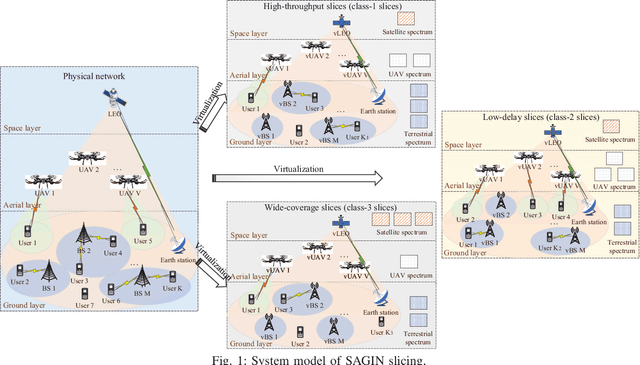
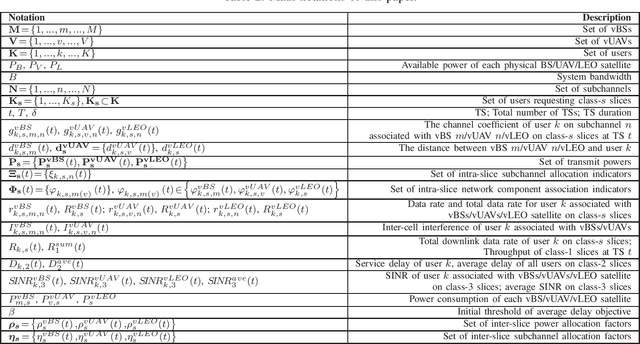
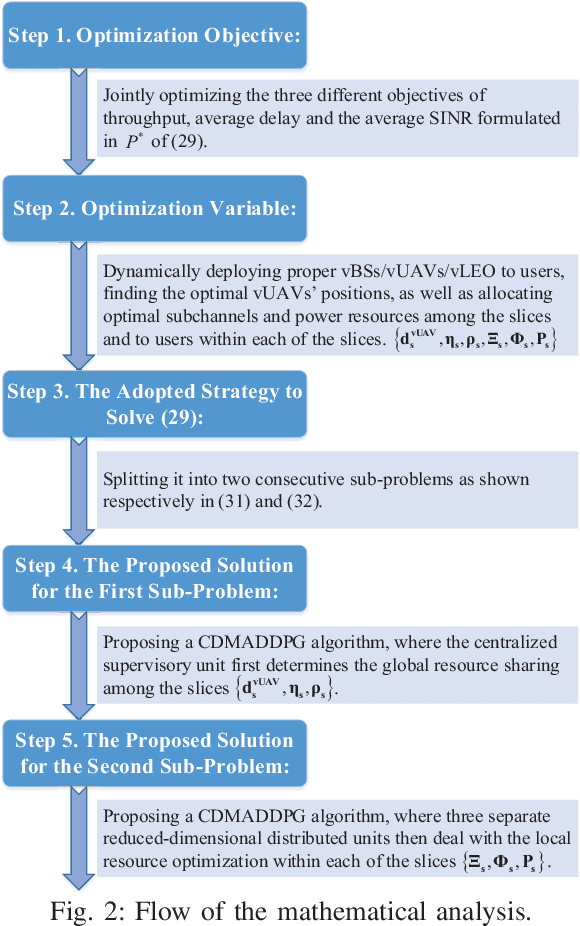
Abstract:As an attractive enabling technology for next-generation wireless communications, network slicing supports diverse customized services in the global space-air-ground integrated network (SAGIN) with diverse resource constraints. In this paper, we dynamically consider three typical classes of radio access network (RAN) slices, namely high-throughput slices, low-delay slices and wide-coverage slices, under the same underlying physical SAGIN. The throughput, the service delay and the coverage area of these three classes of RAN slices are jointly optimized in a non-scalar form by considering the distinct channel features and service advantages of the terrestrial, aerial and satellite components of SAGINs. A joint central and distributed multi-agent deep deterministic policy gradient (CDMADDPG) algorithm is proposed for solving the above problem to obtain the Pareto optimal solutions. The algorithm first determines the optimal virtual unmanned aerial vehicle (vUAV) positions and the inter-slice sub-channel and power sharing by relying on a centralized unit. Then it optimizes the intra-slice sub-channel and power allocation, and the virtual base station (vBS)/vUAV/virtual low earth orbit (vLEO) satellite deployment in support of three classes of slices by three separate distributed units. Simulation results verify that the proposed method approaches the Pareto-optimal exploitation of multiple RAN slices, and outperforms the benchmarkers.
Energy-efficient Time-modulated Beam-forming for Joint Communication-Radar Systems
Aug 07, 2023



Abstract:To alleviate the shortage of spectral resources as well as to reduce the weight, volume, and power consumption of wireless systems, joint communication-radar (JCR) systems have become a focus of interest in both civil and military fields. JCR systems based on time-modulated arrays (TMAs) constitute an attractive solution as a benefit of their high degree of beam steering freedom, low cost, and high accuracy. However, their sideband radiation results in energy loss, which is an inherent drawback. Hence the energy-efficiency optimization of TMA-based JCR systems is of salient importance, but most of the existing TMA energy-efficiency optimization methods do not apply to JCR systems. To circumvent their problems, a single-sideband structure is designed for flexibly reconfigurable energy-efficient TMA beam steering. First, some preliminaries on single-sideband TMAs are introduced. Then, a closed-form expression is derived for characterizing the energy efficiency. Finally, the theoretical results are validated by simulations.
On the Security of LEO Satellite Communication Systems: Vulnerabilities, Countermeasures, and Future Trends
Jan 09, 2022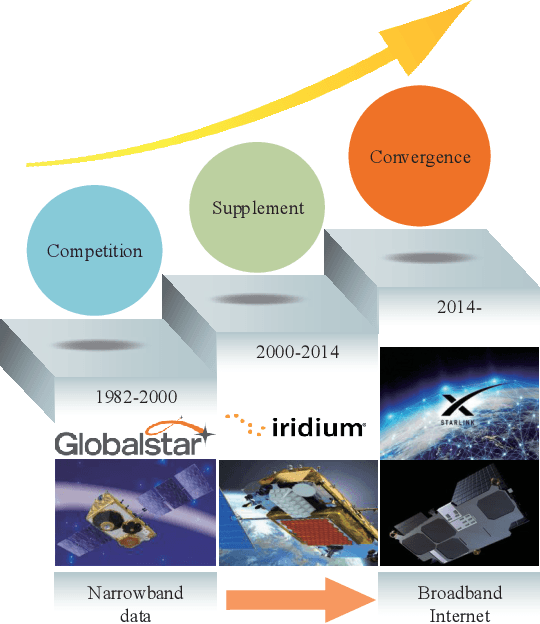
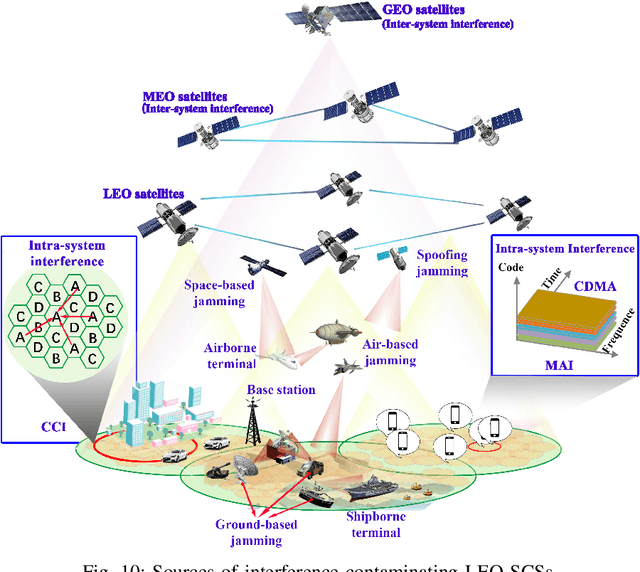
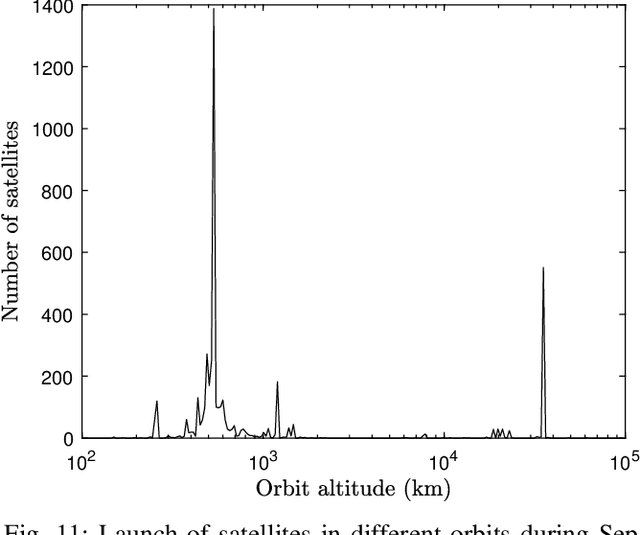
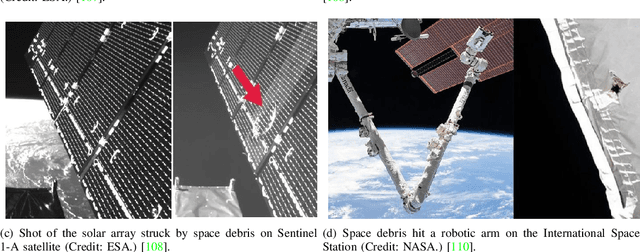
Abstract:Low Earth Orbit (LEO) satellite systems undergo a period of rapid development driven by the ever-increasing user demands, reduced costs, and technological progress. Since there is a paucity of literature on the security issues of LEO Satellite Communication Systems (SCSs), we aim for filling this knowledge gap. Specifically, we critically appraise the inherent characteristics of LEO SCSs and summarize their unique security vulnerabilities. In light of this, we further discuss their security vulnerabilities, including the issues of passive and active eavesdropping attacks, interference scenarios, single event upsets, and space debris. Subsequently, we discuss the corresponding active and passive security countermeasures, followed by unveiling a range of trade-offs, security vulnerabilities and their countermeasures. Furthermore, we shed light on several promising future research directions for enhancing the security of LEO SCSs, such as secure quantum communications, three-dimensional virtual arrays, artificial intelligence-based security measures, space-based blockchain, and intelligent reflecting surface enabled secure transmission. Finally, the take-away messages of this paper are crystallized in our concluding design guidelines.
Deep Reinforcement Learning Aided Packet-Routing For Aeronautical Ad-Hoc Networks Formed by Passenger Planes
Oct 28, 2021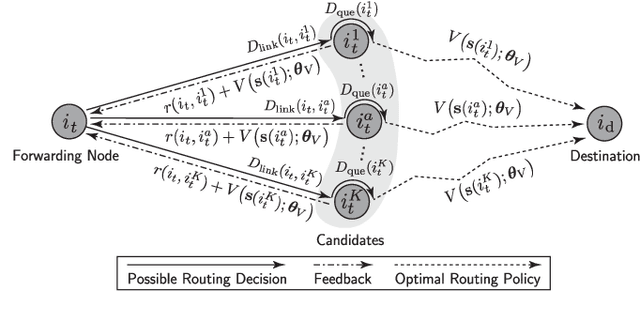
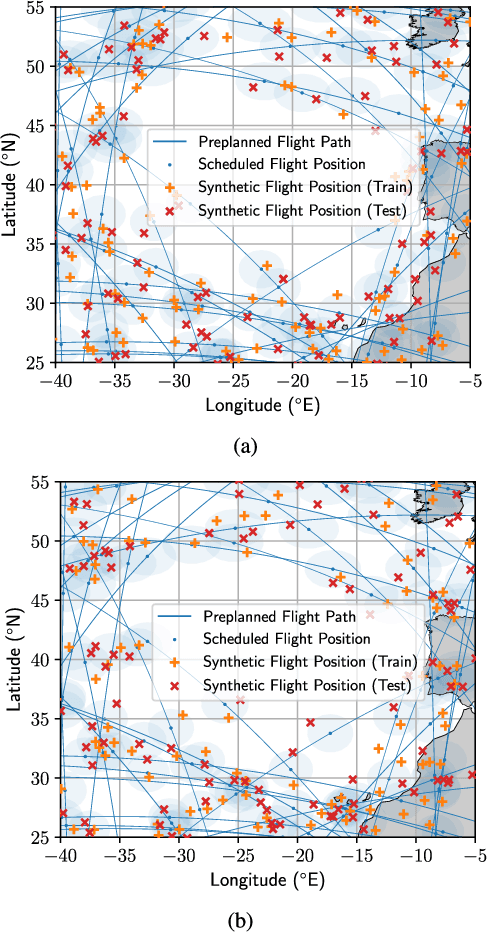
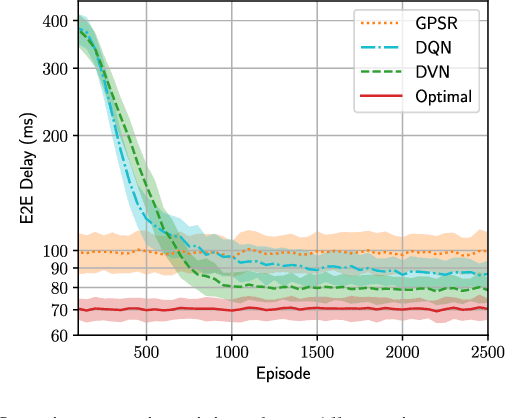
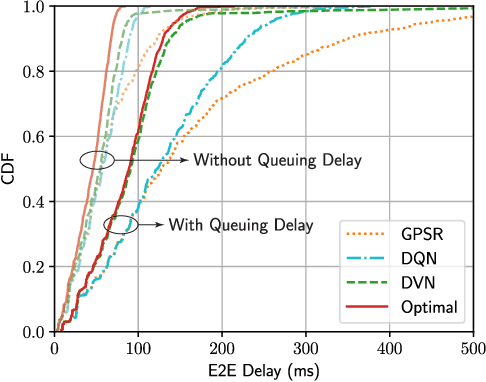
Abstract:Data packet routing in aeronautical ad-hoc networks (AANETs) is challenging due to their high-dynamic topology. In this paper, we invoke deep reinforcement learning for routing in AANETs aiming at minimizing the end-to-end (E2E) delay. Specifically, a deep Q-network (DQN) is conceived for capturing the relationship between the optimal routing decision and the local geographic information observed by the forwarding node. The DQN is trained in an offline manner based on historical flight data and then stored by each airplane for assisting their routing decisions during flight. To boost the learning efficiency and the online adaptability of the proposed DQN-routing, we further exploit the knowledge concerning the system's dynamics by using a deep value network (DVN) conceived with a feedback mechanism. Our simulation results show that both DQN-routing and DVN-routing achieve lower E2E delay than the benchmark protocol, and DVN-routing performs similarly to the optimal routing that relies on perfect global information.
Deep Learning Aided Packet Routing in Aeronautical Ad-Hoc Networks Relying on Real Flight Data: From Single-Objective to Near-Pareto Multi-Objective Optimization
Oct 28, 2021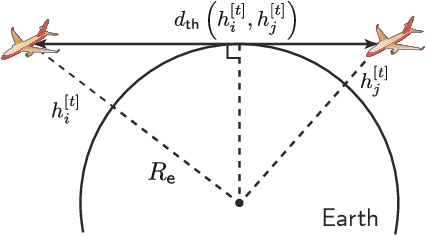
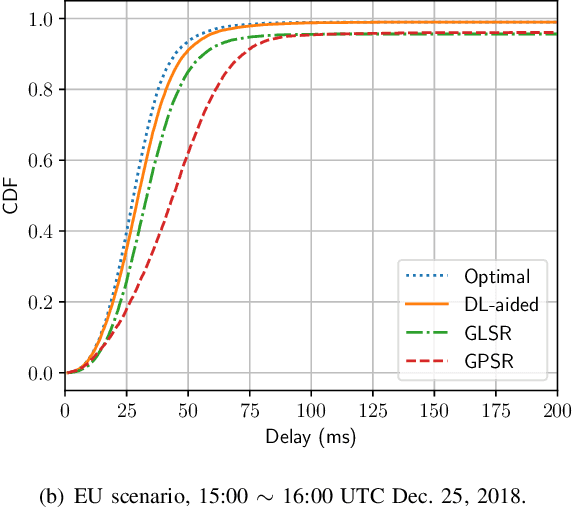

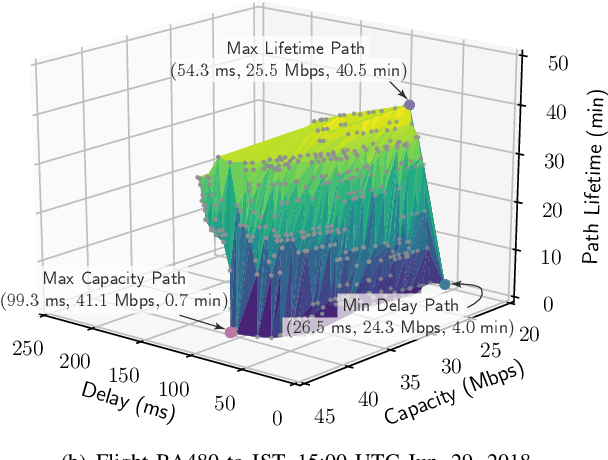
Abstract:Data packet routing in aeronautical ad-hoc networks (AANETs) is challenging due to their high-dynamic topology. In this paper, we invoke deep learning (DL) to assist routing in AANETs. We set out from the single objective of minimizing the end-to-end (E2E) delay. Specifically, a deep neural network (DNN) is conceived for mapping the local geographic information observed by the forwarding node into the information required for determining the optimal next hop. The DNN is trained by exploiting the regular mobility pattern of commercial passenger airplanes from historical flight data. After training, the DNN is stored by each airplane for assisting their routing decisions during flight relying solely on local geographic information. Furthermore, we extend the DL-aided routing algorithm to a multi-objective scenario, where we aim for simultaneously minimizing the delay, maximizing the path capacity, and maximizing the path lifetime. Our simulation results based on real flight data show that the proposed DL-aided routing outperforms existing position-based routing protocols in terms of its E2E delay, path capacity as well as path lifetime, and it is capable of approaching the Pareto front that is obtained using global link information.
Deep Learning Aided Routing for Space-Air-Ground Integrated Networks Relying on Real Satellite, Flight, and Shipping Data
Oct 28, 2021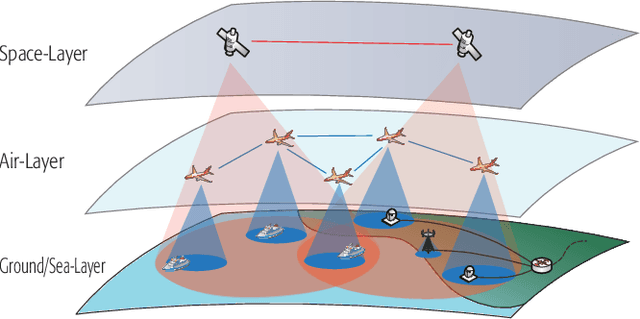
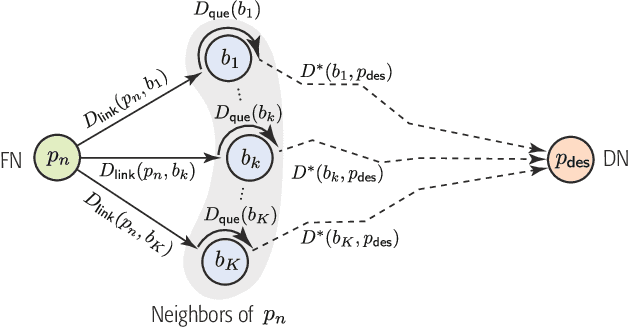
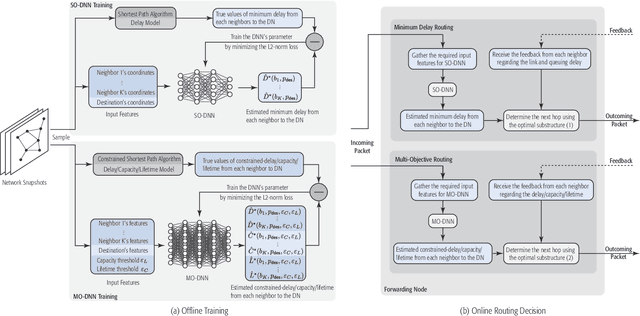
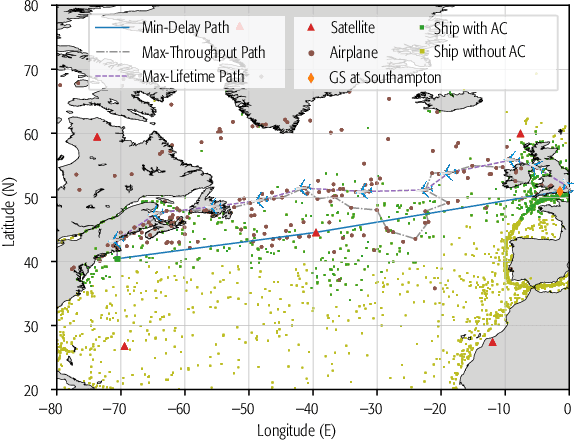
Abstract:Current maritime communications mainly rely on satellites having meager transmission resources, hence suffering from poorer performance than modern terrestrial wireless networks. With the growth of transcontinental air traffic, the promising concept of aeronautical ad hoc networking relying on commercial passenger airplanes is potentially capable of enhancing satellite-based maritime communications via air-to-ground and multi-hop air-to-air links. In this article, we conceive space-air-ground integrated networks (SAGINs) for supporting ubiquitous maritime communications, where the low-earth-orbit satellite constellations, passenger airplanes, terrestrial base stations, ships, respectively, serve as the space-, air-, ground- and sea-layer. To meet heterogeneous service requirements, and accommodate the time-varying and self-organizing nature of SAGINs, we propose a deep learning (DL) aided multi-objective routing algorithm, which exploits the quasi-predictable network topology and operates in a distributed manner. Our simulation results based on real satellite, flight, and shipping data in the North Atlantic region show that the integrated network enhances the coverage quality by reducing the end-to-end (E2E) delay and by boosting the E2E throughput as well as improving the path-lifetime. The results demonstrate that our DL-aided multi-objective routing algorithm is capable of achieving near Pareto-optimal performance.
An Unified Intelligence-Communication Model for Multi-Agent System Part-I: Overview
Nov 25, 2018
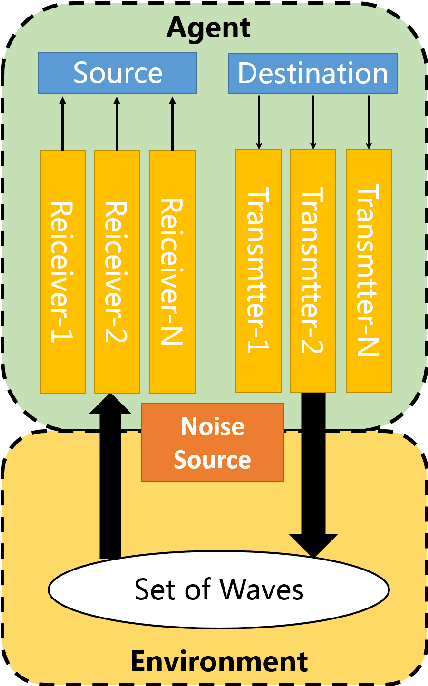
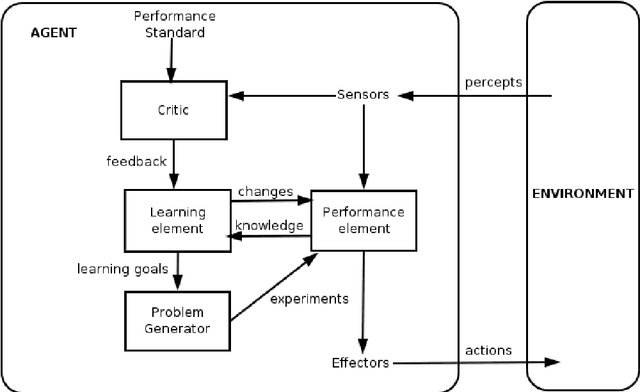
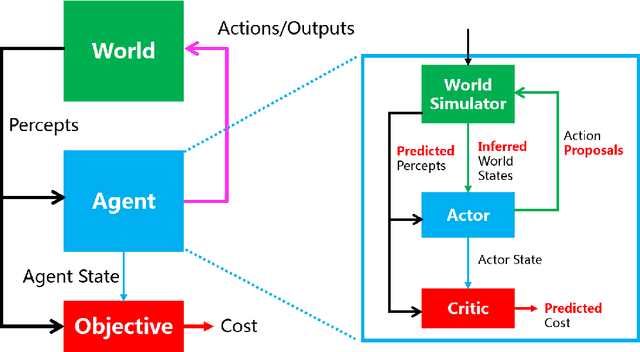
Abstract:Motivated by Shannon's model and recent rehabilitation of self-supervised artificial intelligence having a "World Model", this paper propose an unified intelligence-communication (UIC) model for describing a single agent and any multi-agent system. Firstly, the environment is modelled as the generic communication channel between agents. Secondly, the UIC model adopts a learning-agent model for unifying several well-adopted agent architecture, e.g. rule-based agent model in complex adaptive systems, layered model for describing human-level intelligence, world-model based agent model. The model may also provide an unified approach to investigate a multi-agent system (MAS) having multiple action-perception modalities, e.g. explicitly information transfer and implicit information transfer. This treatise would be divided into three parts, and this first part provides an overview of the UIC model without introducing cumbersome mathematical analysis and optimizations. In the second part of this treatise, case studies with quantitative analysis driven by the UIC model would be provided, exemplifying the adoption of the UIC model in multi-agent system. Specifically, two representative cases would be studied, namely the analysis of a natural multi-agent system, as well as the co-design of communication, perception and action in an artificial multi-agent system. In the third part of this treatise, the paper provides further insights and future research directions motivated by the UIC model, such as unification of single intelligence and collective intelligence, a possible explanation of intelligence emergence and a dual model for agent-environment intelligence hypothesis. Notes: This paper is a Previewed Version, the extended full-version would be released after being accepted.
 Add to Chrome
Add to Chrome Add to Firefox
Add to Firefox Add to Edge
Add to Edge